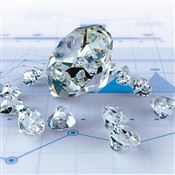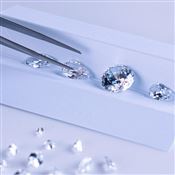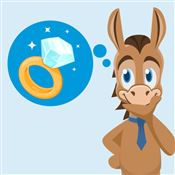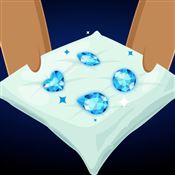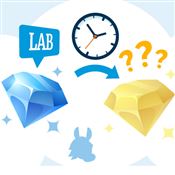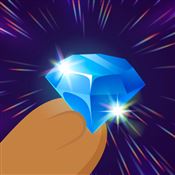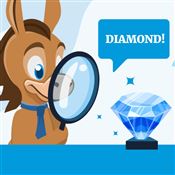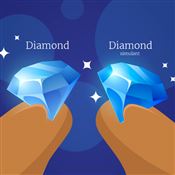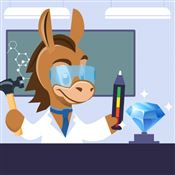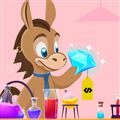Uncut Diamonds: What You Need to Know
You can save a lot by purchasing a rough (or uncut) diamond, but are they worth it? If you like this artsy look, learn how to pick out an uncut diamond.
Uncut, also called raw or rough, diamonds are an unpolished and unshaped stone. They can be lab grown but are more often naturally mined and they vary in size. These diamonds are usually less expensive than cut diamonds - but does that mean you should opt for them? Not necessarily.
Determining a cut diamond's worth
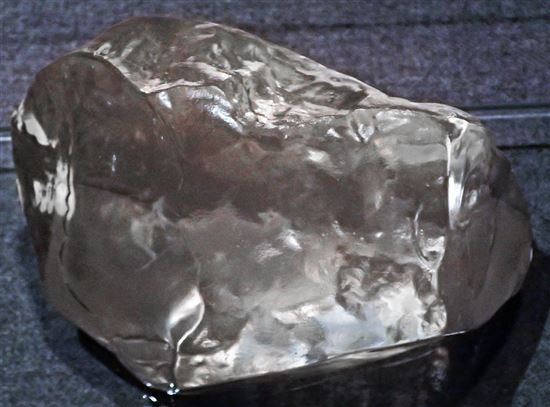 |
| © James St. John (CC BY 2.0) via Flickr |
The sparkly diamonds you see on most engagement rings are cut diamonds. A cut diamond's value is based on the 4 C's: cut, carat, color, and clarity. Cut is the most important factor when determining value.
You might think "cut" refers to a diamond's shape (round, princess, marquise, etc.). But cut actually refers to a diamond's proportion, symmetry, and polish. Together, these affect how light bounces off each angle and facet. The more well cut a diamond is, the more sparkly it is.
It takes considerable skill (and technology) for a diamond cutter to achieve an ideal cut. Because of the skill and labor involved, cut diamonds are pricey.
While cut is a significant factor, the stone's natural quality has an even larger impact on the value. We need to look at the nature of the rough diamond - that is, its size, color, and clarity.
Determining an uncut diamond's worth
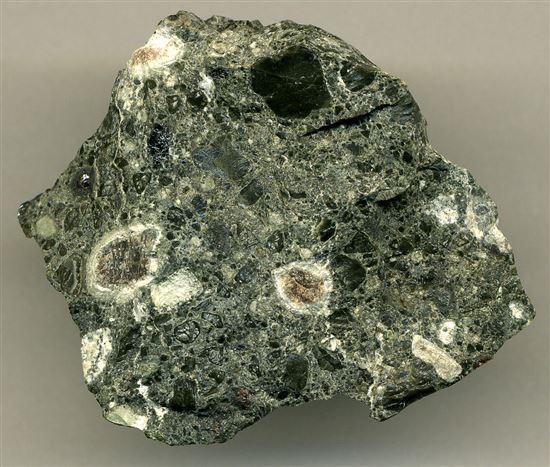 |
| Kimberlite © James St. John (CC BY 2.0) via Flickr |
Rough diamonds don't have any sparkle. But its quality will go on to determine the cost of the finished cut diamond. The price of an uncut diamond is primarily related to its carat (size), clarity, and color.
- Carat: Normally, the higher the carat weight, the more it costs. This is assuming that all other qualities are the same. A smaller rough that is clear could cost more than a larger rough that is yellow and has a lot of flaws.
- Clarity: Diamonds almost always contain flaws (called inclusions) inside them. The fewer inclusions a diamond has, the higher grade of clarity it earns. A flawless raw diamond may be worth more than a cut diamond with a low clarity grade.
- Color: Most colorless (or white) diamonds have natural yellow or brown tints of color in them. The more color a diamond has, the less bright and lustrous it'll appear. The more colorless a diamond is, the more rare and expensive.
- Shape of the rough: This is another factor that could have an impact on the value, particularly if you want to be able to cut it. Sometimes, a large rough is a funny shape, and they have to cut off a lot to make one small polished diamond. This would make it less valuable than a smaller rough with a nice symmetrical shape.
Pros and Cons of Buying an Uncut Diamond
Pros:
- They cost way less. The biggest appeal of purchasing a rough diamond is that they are often less expensive than cut diamonds. You can find an uncut, 1-carat diamond ring for a few hundred dollars vs a few thousand for the same sized cut ring.
- They're conflict-free. Uncut diamonds are always conflict-free because all rough diamonds must have a Kimberley Process Certificate to be imported or exported from any country. This certificate confirms that the diamond was mined from a war-free area. However, once a diamond has been cut and polished, it's out of the Kimberly Process' hands.
- They're artsy and unique. Uncut diamond jewelry is uncommon and will stand out. Some women like the almost quartz-like appearance of rough diamonds.
Cons:
- There isn't any sparkle! If you're looking for a stone that looks similar to a cut diamond, but is less expensive, consider moissanite or white topaz.
- They are often darkly colored and full of flaws and inclusions. Generally, after diamonds are mined, the ones with the most potential are sent off to be cut and polished and the lower quality stones are left uncut.
- It's hard to pick right. It takes an expert to determine if a rough diamond is suitable for cutting and another expert to execute the cutting process. Most of us just don't have those skills. However, if you like the look of a rough diamond, then you don't have to worry about this.
Can you hire someone to cut your diamond?
If you think you can save a few dollars by buying a rough diamond and having it cut for you, you may want to think again.
While you can have some rough diamonds cut, there are a few important things to remember:
- It's important that your rough diamond be gem grade, which means the stone has the potential to be cut into something presentable. The rough diamond needs to have no internal fractures and very few inclusions.
- The stone must also be fairly large. Cut diamonds are usually half the size of the original rough stone they started out as. So a 5-carat stone would become a 2.5-carat diamond after being cut and polished.
- You need to find experts. Not only do you need to be an expert at choosing a rough diamond with potential, you need to partner with a skilled and trustworthy diamond cutter. It's hard to find a cutter in your area, as most work for larger companies and won't do independent small jobs.
- It can still be pricey. Diamond cutting professionals can be very expensive. Cutting is usually priced per carat, so expect to pay anywhere from $125 to $400 per carat! And remember, there are no guarantees. If you picked a low-quality stone to begin with, all of your effort will be fruitless.
Uncut diamonds are one way to save money but can be a hassle. If you're looking for a more affordable stone, consider reputable online retailers. These stores offer high-quality images and videos of their polished gems so shoppers know what they're getting.
Bottom Line
The natural quality of a rough diamond (carat, color, and clarity) determines the value of a cut and polished diamond. The cutting process is very exhaustive and requires immense skill, so raw, uncut diamonds will almost always be less expensive than a cut diamond with the same carat, color, and clarity.
When looking for an engagement ring, a family heirloom, or a timeless piece of jewelry, a cut diamond is almost always going to be the better choice. They are more sought after than rough diamonds, and the process of cutting them is involved and expensive in itself. Some people do prefer the look of uncut diamonds, but this trend goes in and out of style while the classic beauty of a cut diamond is forever.
Write to Megan N at feedback@creditdonkey.com. Follow us on Twitter and Facebook for our latest posts.
|
|
|
